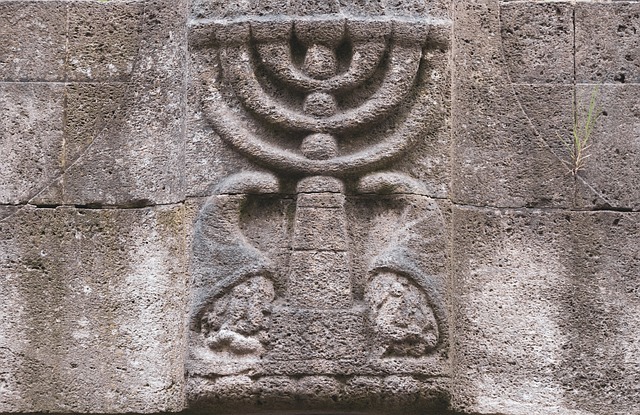By Shahil Ahmed Submitted On August 30, 2010 
During the past decade, there has been an unexpected surge in interest towards the Jewish culture in medieval Europe. Two international conventions on Jewish heritage in Europe have only helped to fuel the global interest on the subject. At the same time, these meets have provided the much-needed fund to restore and renovate the ancient and medieval period Jewish monuments in the region. And significantly, the Czech capital Prague, with sizable Jewish monuments, has been the hub of such activities that have drawn hordes of tourists from various parts of the globe.
Old Town Square
A visit to the Old Town Square in Prague or Staromestske Namesti, the hub of all activities in the area, is like traveling into the past – back by 600 or 700 years! The visitors are full of admiration and awe as the atmosphere at the place is saturated with glorious as well as the tragic history of the medieval Jews. In addition to the Wenceslas Square, situated at a five minutes’ walking distance, the Old Town Square is the only other city centre in Prague. It is amongst the most beautiful historical locations in entire Europe.
Talking about history, the Old Town Square dates back to the 12th century and was primarily used as Prague’s central marketplace. As many new Romanesque, Baroque and Gothic-style constructions came up around the marketplace over the centuries, the Old Town Square gained in wealth both economically and aesthetically. Today, the most significant tourist attractions at the Old Town Square comprise the Church of Our Lady before Tyn, the Old Town Hall Tower and the Astronomical Clock and the stunning St. Nicholas Church. Right in the heart if the Old Town Square is the statue of the great reformer Jan Hus.
Jewish Town Hall
Originally constructed in the 16th century, the Old Jewish Town Hall is also known as the Zidovska radnice. It is situated adjacent to the Old-New Synagogue in Josefov, but following renovations, today it sports a decorative frontage. The new look was added in the 18th century and has a clock tower with Hebrew figures. The building is known to be funded by the Jewish Town mayor Maisel. Most of parts of the Jewish Town Hall are under the scheduled area and the only part open for the general public is the Kosher Eatery. Currently, the town hall is used as the Jewish Community Center and offers information regarding Jewish tours, activities and events of interest to both the local as well as foreign tourists.
The Old-New Synagogue
The Old-New Synagogue at Josefov in Prague is Europe’s oldest active synagogue and is also known as Altneuschul in German and Staronova synagogue in Czech. Built in the Gothic style in 1270, the Old-New-Synagogue was initially called the New Synagogue or Great Shul. When more synagogues came up in Prague by the 16th century this came to be known as the Old-New Shul or Old-New Synagogue. This is because another synagogue much older to this one and constructed earlier than 1270 was demolished in 1867. The structure of this Gothic style synagogue is outstanding and to reach the foyer one has to climb a flight of nine steps from the street. The foyer opens to a rectangular hall which has six arched bays supported by two large pillars in the middle. The mausoleum has twelve Gothic windows representing the 12 Israeli tribes.
Synagogues of Prague
In all there are seven synagogues in Prague and five of these synagogues can be found in the relics of the Jewish ghetto. Apart from the Old-New Synagogue, there are the Maisel Synagogue, the Pinkas Synagogue, the High Synagogue, the Klausen Synagogue, the Spanish Synagogue and the Jubilee Synagogue. The Maisel Synagogue was built with the permission of Emperor Rudolph II in 1591 and is named after Mordechai Maisel, who funded the construction. On the other hand, the Pinkas Synagogue was built in the Renaissance style. If first finds mention 1492 and was reconstructed in 1953 after floods had destroyed it completely. On the walls of this synagogue there is a list of 77,297 Jews who perished during the World War II. Situated near the Jewish Town Hall, the High Synagogue is named such as it is situated at a great altitude. Near the Old Jewish Cemetery you will find the Klausen Synagogue, which was originally built in 1694 and re-constructed several times. The Spanish Synagogue was built during 1867-8 and is different from the other synagogues in Prague. This synagogue is unique since Moorish decorations were used in its construction. The most modern in this series of synagogues in Prague is the Jubilee Synagogue. This was built in the early 20th century in the New Town and prayer services are held regularly at this synagogue.
Old Jewish Cemetery
Established in the 15th century, the Old Jewish Cemetery is situated in the Josefov area – a primeval Jewish ghetto – and has 12,000 tombstones scattered all over the area. The cemetery was established at a time when the Jews were not permitted to bury their dead outside the area earmarked for the community. As the cemetery area was too congested, bodies were buried here on top of one another. And it is believed that most of the tombstones have twelve layers of burials below them! Currently, no more bodies are buried here and the Jewish Museum in Prague has taken over the responsibility to preserve this chaotic place. Incidentally, the Old Jewish Cemetery was a favorite place for the surrealist writer Franz Kafka who spent much of his idle time here.
Jewish Museum
Founded in 1906, the Jewish Museum in Prague is the arguably the largest of its kind in Europe and has an enormous assortment of sacred Jewish works of art. According to modest estimates, the museum houses around 40,000 artistic artifacts and 100,000 items of printed fabric. Synagogue objects like textiles and silver include almost two-thirds of the museum’s huge collection. The exhibits of the Jewish Museum are to be found in six different locations of historic importance. They include the Maisel Synagogue, the Old Jewish Cemetery, the Pinkas Synagogue, the Ceremonial Hall, the Spanish Synagogue and the Klausen Synagogue. The museum not only comprises synagogues and exhibitions on the Jew community’s past, but also promotes contemporary Jewish art and culture. The Robert Guttmann Gallery situated near the Spanish Synagogue is an ideal example of such promotional activities.
The Jewish Quarter
The Jewish Quarter or Josefov in Prague is akin to a ghetto where the members of the Jewish community were compelled to live in the early days. The Jewish settlement in the area dates back to the 10th century. Prior to and during the World War II, all the Jews residing in the area was required to wear clothes with special markings on them to identify their community. The place has an old cemetery, numerous old buildings and many old synagogues. However, prayer services are not held in most of these synagogues, as the Jewish population in Prague has diminished from 120,000 before the World War II to just 8,000 now. And many of these 8,000 Jews also no longer reside in the region today. The place is, however, being re-built now and has already got rid of its clumsy look.
Franz Kafka House
If you are in Prague, you cannot miss Franz Kafka. Whether you are in a library, bookstore or any other place, the shadow of the great surrealist writer of the 20th century will always loom large. While Kafka’s house, where he stayed with his sister for a few months, is located at the beginning of the Golden Lane, his statue stands near the synagogues in the Jewish colony. Presently, Kafka’s house is being used as a museum where outfits, armaments and works of art of the middle ages are on display. For the uninhabited, the writings of Franz Kafka, who was born in Czechoslovakia, but spoke German, mostly became popular after his death. He primarily wrote about the loneliness of the 20th century man, the bureaucratic maze and his fears. Among Kafka’s most famous novel is ‘The castle and The Trial’ that best demonstrates Kafkaesque characters and the features of his unique writing style. He succumbed to tuberculosis in 1924.
The Hebrew Clock
Another attraction of the Old Town Square in Prague is the Hebrew Clock of the Old Jewish Town Hall in Josefov. The clock, established in 1410, is interesting in many ways. While the clock has Hebrew numbers and runs in an anti-clock manner, it does not depict time. On the contrary, the clock depicts the days of the Christian calendar, phases of the moon, seasons and equinoxes. On the upper windows, there is a 30-second demonstration of apostles, deadly skeletons and a crowing cock every hour that mesmerizes and often scares the tourists. On a pane above this Hebrew Clock there is another clock with Roman numbers.
Jewish Ceremonial Hall
Located in Jewish Quarter, the Jewish Ceremonial Hall is also known as Obradni Sin. It was built in neo-renaissance style in 1911-12. Noted architect J. Gerstl planned the structure that was to be used for the Jewish Burial Society. The construction was initially utilized as a ceremonial hall and mortuary, but now it forms a part of the Jewish Museum of Prague. Currently, the Jewish Ceremonial Hall houses a permanent exhibition relating to Jewish history.
Author is an expert writer who about various niche of life.
Article Source: https://EzineArticles.com/expert/Shahil_Ahmed/515686


